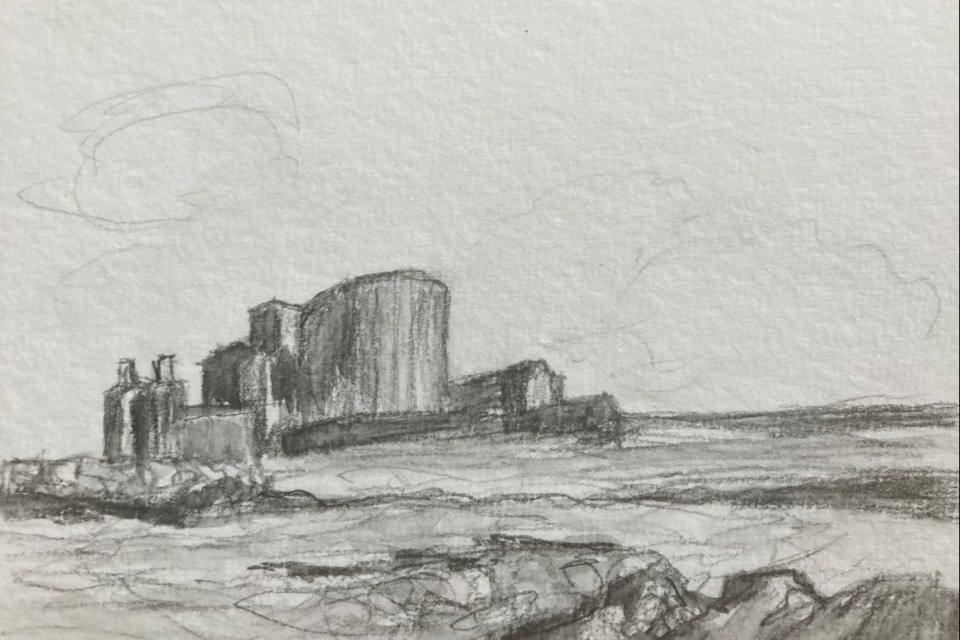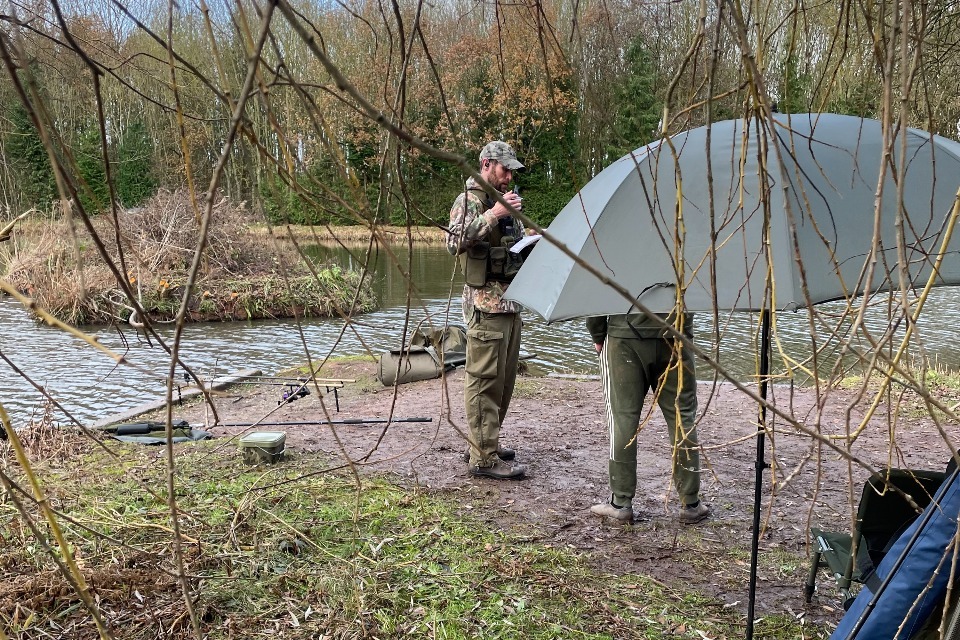On 11 and 12 September 2024, CoRWM members met on the beautiful island of Yns Mon (Anglesey) for its Closed and Open Plenary meetings. Some of the hardier members of the Committee were able to swim in the less than tropical waters of Trearddur Bay between working sessions. As well as our regular business, we had an excellent presentation from Sasha Wynn Davies, chair of the Wales Nuclear Forum. North Wales has a strong nuclear heritage and is part of the “nuclear arc” of Cumbria, Lancashire, Cheshire and North Wales. The power station at Wylfa was a crucial source of employment on Anglesey and Sasha left us in no doubt that the future economic and social well-being of the island is bound up with potential new nuclear development at that site, whether at gigawatt scale or with small modular reactors, or both.
After our Open Plenary meeting, we were privileged to visit Wylfa, at the invitation of the site manager Stuart Law. Stuart and the site waste manager Adele Brooksbank gave us an excellent overview of the issues involved in decommissioning and waste management before taking us on an illuminating tour. It was opportune to make the visit for two reasons first as a helpful complement to our visit to Trawsfynydd last year, another Magnox station, but a very different one; and secondly since the last visit by CoRWM members to Wylfa was in January 2015, almost 10 years ago. Much has happened since then including the consignment of the last batch of Magnox fuel to Sellafield for reprocessing in September 2019. It is greatly to the credit of the site management that defuelling was undertaken and completed so that Sellafield was not kept waiting for the fuel., and moreover that the site was able to reshuffle fuel between reactors to accommodate the earlier delays in Sellafield’s readiness to receive spent fuel. The site has also completed the difficult job of dealing with a number of badly corroded fuel elements affected by a water leak into the dry store in the past.
This location of Wyla on the north coast of Anglesey was chosen for a nuclear power station because of its geological stability and easy access from the sea for construction materials. The proximity of seawater was important for cooling its twin nuclear reactors, the last and largest of the Magnox type. Construction began in 1963 and the station fed its first electricity into the supply grid in 1971. A high-voltage power line was built across Anglesey to transport the electricity. A considerable portion of the output, up to 255 MW, was consumed by the nearby Anglesey Aluminium smelting plant.
Wylfa was the last of the ten Magnox power stations to be built and the second constructed with a pre-stressed concrete vessel. Construction began in 1963 at a cost of £740 million and commercial operation commenced in 1971. Its twin reactors and associated turbo-generators had a generating capacity of up to 980 megawatts (electrical) [MW(e)]. It was the largest of the Magnox stations and its massive scale was very apparent on our site tour. Over its life from 1971 to 2015, Wylfa produced 232 TW hours of electricity, a very significant contribution to the UK’s power needs.
It is proposed to have the site ready for a period of care and maintenance by 2037, which will leave just the reactors and dry store cells. However, critically, achieving that goal will depend on reliable funding. In particular, certainty of funding is necessary because of the long lead in times to projects because of the need to comply with procurement legislation. It was clear that in some cases better, storage facilities are needed for waste, with some wastes having to be stored in makeshift locations. While this is not unsafe, it is certainly sub-optimal in terms of handling and access. Considerable use was made of asbestos as a cheap building material during construction in the 1960s, and this will present its own challenges in achieving a state of passive safety for the remaining buildings.
In terms of waste disposal offsite, we were interested to hear of the cessation of shipments to the LLWR at Drigg, in favour of commercial licensed landfills and incinerators. Since 2007, government policy and strategy has sought to divert wastes away from the LLWR where alternative routes are available, as LLWR itself is seen as a valuable national resource and subject to increasing space constraints. Also, the Wylfa environmental permit was varied to allow a wider range of suitable disposal routes. The site will generate about 3,000 tonnes of graphite, currently packed as tightly as possible for a core design, and which once dismantled and packaged for a GDF will have an increased volume of 2.6. This illustrates graphically the future demands on space in a GDF from this particular waste stream.
Finally we had an interesting visit to the control room for the twin reactors. The enormous size of Wylfa’s cores gave inherent stability against transients, i.e. changes in the coolant system temperature, or pressure, caused by changes in power output, by evening out fluctuations. This will have been beneficial in terms of waste production, and may be a factor to bear in mind with a generation of smaller reactors in the offing. It was also interesting to hear (at least for those of us more technically minded) that some fuel had been in low flux regions of the core for 22 years this must presumably have been beneficial in terms of spent fuel arisings relative to the 11 outages that will have happened during that time. Also, online refuelling at Wylfa may well have enabled greater fidelity in fuel discharge and hence less spent fuel volume. This does illustrate an important linkage between reactor design and operation and spent fuel generation.
This useful visit left us with plenty to consider in our ongoing work. We were impressed that Stuart Law had worked at Wylfa for 32 years and his pride in both the history and current phase of the site, together with his intimate knowledge, were apparent. The challenge at Wylfa and of course other Magnox and AGR sites will be maintaining those levels of commitment and practical knowledge as the current generation of management retires.







